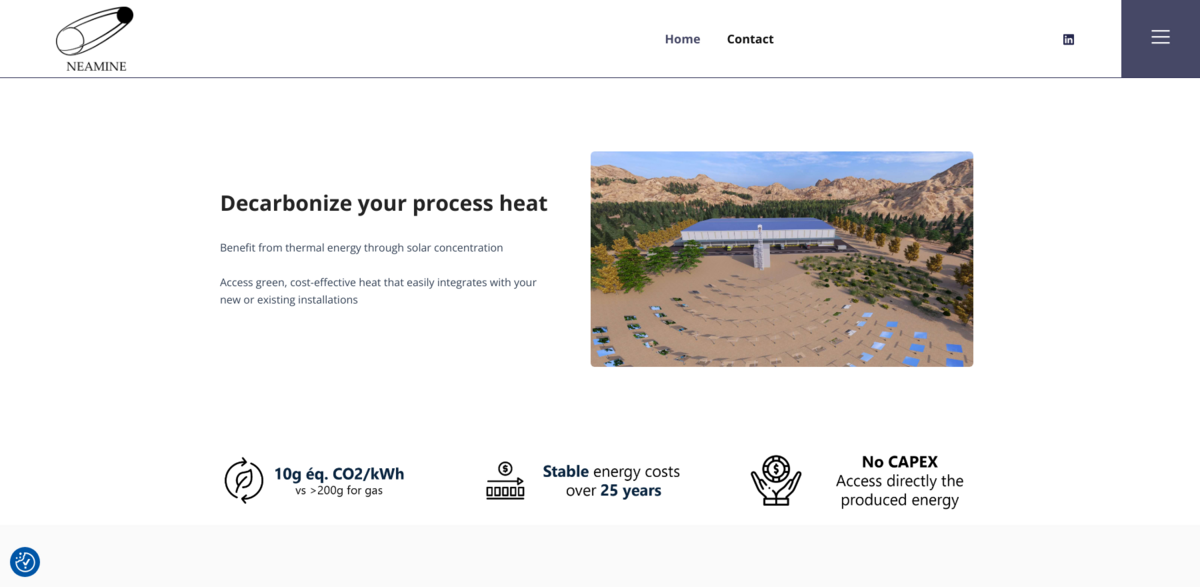What is the Neamine Project?
Neamine is all about decarbonizing industrial process heat by harnessing the power of concentrated solar thermal energy. The project focuses on producing biochar using sunlight concentrated to generate high temperatures, aiming to replace or at least partially substitute traditional energy sources like gas. It’s a fresh approach that taps into green, cost-effective heat, designed to integrate smoothly with both new and existing industrial installations. In short, Neamine is revolutionizing how industries think about energy efficiency, especially when high temperatures are needed.
Main Benefits of Neamine’s Solution
Here’s why this solar concentration technology stands out:
- Decarbonization: Swap out gas for solar energy and significantly cut down your environmental footprint.
- Adaptability: Works across a wide temperature range—from 100°C all the way up to 900°C—and scales power from 2 MW to 50 MW.
- Low Cost: Offers a much cheaper energy alternative compared to gas, electricity, and even hydrogen solutions.
How Does Solar Concentration Work?
At the heart of Neamine’s technology is solar concentration, which basically means focusing sunlight to generate intense heat. This thermal energy can then be used directly in industrial processes that require high temperatures. It’s a clever way to tap into renewable energy without relying on electricity or fossil fuels. Plus, it’s flexible enough to fit into existing setups, making the transition smoother for industries looking to green their operations.
Biochar Production with Sunlight
One of the standout applications of this technology is producing biochar—a carbon-rich material used to improve soil health and sequester carbon. By using concentrated sunlight, Neamine creates biochar efficiently and sustainably. This not only supports environmental goals but also opens up new avenues for industries to contribute to carbon capture efforts while benefiting from renewable energy.
Integration and Scalability
Neamine’s solution isn’t just about innovation; it’s about practicality. The system is designed to integrate easily with both new and existing industrial installations. Whether a facility needs 2 MW or up to 50 MW of power, the technology scales accordingly. This adaptability means industries of various sizes and sectors can adopt solar thermal energy without overhauling their entire infrastructure.
Project Impact on Sustainable Development Goals (SDGs)
- SDG 7: Affordable and Clean Energy – Providing cost-effective, renewable thermal energy.
- SDG 9: Industry, Innovation, and Infrastructure – Promoting sustainable industrial processes.
- SDG 12: Responsible Consumption and Production – Reducing reliance on fossil fuels.
- SDG 13: Climate Action – Lowering greenhouse gas emissions through decarbonization.
- SDG 15: Life on Land – Supporting biochar production, which benefits soil health and carbon sequestration.
Why This Matters Now
With climate change pressing harder than ever, industries need solutions that are both effective and practical. Neamine’s approach offers a way to cut emissions without breaking the bank or disrupting existing processes. It’s a timely innovation that could reshape how industries consume energy—making sustainability not just a goal, but a reality. So, when it comes to process heat, the future might just be a little brighter… and a lot greener.





















